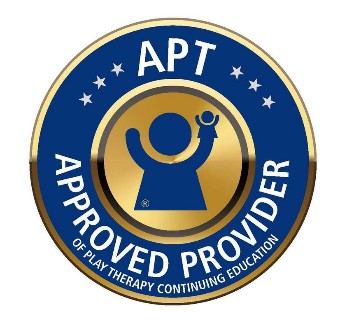Using Temperament in Adlerian Play Therapy
In this fun Adlerian play therapy webinar, explore 9 temperament traits and learn tools for assessing those traits in the play room, including temperament as one component in your conceptualization of play therapy clients, and designing play therapy interventions.
Description
If you have ever spent time with newborns, infants, or toddlers, and then observed them as they matured, you will have noticed that there are certain traits (e.g., sensitivity, intensity of reaction, persistence) that remain stable over time. These traits are examples of the components of temperament—biologically-based psychological characteristics (Landy & Thompson, 2006) which are the foundation on which the personality develops. In Adlerian play therapy, therapists conceptualize their clients and develop treatment plans that feature custom-designed play therapy interventions based on an understanding of clients’ interpersonal and intrapersonal dynamics and the need for shifts in clients’ patterns of thinking, feeling, and behaving (Kottman & Meany-Walen, 2016, 2018). Adlerian play therapists have not always considered temperament to be an important part of their conceptualization because the emphasis in Individual Psychology has traditionally been on nurture rather than nature (Adler, 1958; Kottman & Meany-Walen, 2018). Adlerian play therapists have recently begun incorporating consideration of temperament as an essential component of lifestyle conceptualization and treatment planning. In this workshop, participants will be introduced to 9 temperament traits (activity level, rhythmicity, first reactions, adaptability, sensitivity, intensity of reaction, mood, distractibility, and persistence) and learn tools for assessing those traits in the play room. They will also learn how to use temperament as one component in their conceptualization of play therapy clients and how to design play therapy interventions to help children and parents learn to cope with the influence of those temperament traits on the thinking, feeling, and behaving of child clients.
 8 Non-Contact CE Hours. (includes 2 hours on Play Therapy Seminal or Historically Significant Theories, 4 hours on Play Therapy Skills and Methods, and 2 hours on Play Therapy Special Topics).
8 Non-Contact CE Hours. (includes 2 hours on Play Therapy Seminal or Historically Significant Theories, 4 hours on Play Therapy Skills and Methods, and 2 hours on Play Therapy Special Topics).
APT Approved Provider 99-055

League of Extraordinary Adlerian Play Therapists (LEAPT) has been approved by NBCC as an Approved Continuing Education Provider, ACEP No. 7402. Programs that do not qualify for NBCC credit are clearly identified. League of Extraordinary Adlerian Play Therapists (LEAPT) is solely responsible for all aspects of the programs.
Objectives
At the end of the workshop, students will be able to:
- Give a clear definition of temperament and a rationale for why knowing about temperament can be important in Adlerian play therapy.
- List and define at least 5 of the 9 elements of temperament.
- Describe how understanding a child' temperament can be useful in conceptualizing and treatment planning in Adlerian play therapy.
- Explain the importance of understanding where a play therapy client is on the continuum of each of the temperament elements.
- List and describe each of the 4 Crucial Cs and explain how the Crucial Cs are used in Adlerian play therapy.
- List and describe each of the 4 goals of misbehavior and explain how the goals of misbehavior are used in Adlerian play therapy.
- Describe how the child's temperament might be evidenced in a play therapy session.
- Describe how a play therapist would work in play therapy with a child based on at least 2 of the temperament elements.
- Describe at least one play therapy intervention that could be used to work with a child who is demonstrating either end of each of the temperament elements.
- Explain the importance of consulting with parents (or teachers) about a child's temperament in Adlerian play therapy consultation.
Agenda
8:00 am - Start
10:00 am - Break #1 (15 minutes)
12:00 pm Lunch (30 minutes)
2:30 pm - Break #2 (15 minutes)
5:00 pm - End